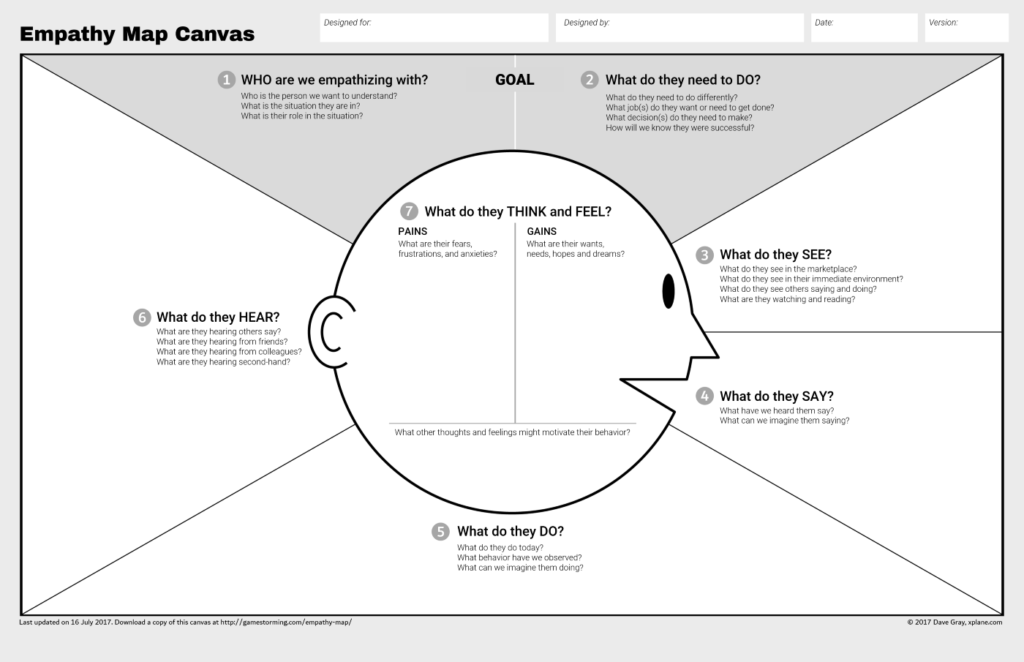Empathy Map Canvas

The Empathy Map is a great powerful tool of Design Thinking that helps putting yourself inside the head of a person you might be looking at as a prospective customer or product user.
It allows you to quickly grasp their experience and where they are coming from.
A User Empathy Map is used to help in the discussion about the needs a user has.
Using it allows you to focus on what was observed, and what can be inferred about your different user groups’ beliefs and emotions.
You can use the Empathy Map alone or in a group as a visual collaboration exercise.
A good video explaining how you can use the empathy map was made by Jeannel King.
You can read directly here
How to use the Empathy Map canvas
1- Incorporated goals into the map, to help teams clarify the context and purpose of the activity
- Usually an output of a WHODO exercise Like brainstorming
- Some people were confused by the goal area so usually set goals in terms of people and behaviors, it made sense for our typical use cases
- However several people felt that the way the goal was worded seemed manipulative, creating a cognitive disconnect between the goal of empathizing and the goal of changing people’s behavior so used language that allows for a broader scope of inquiry
2- The sections are numbered to make the intended sequence of activities in the exercise more explicit
- There’s a reason for the sequence
- More on that below
3- The “Think and Feel” element is central and put it inside the head, to emphasize the difference between observable phenomena (outside the head) thoughts and feelings (inside the head), which can be guessed or inferred but never observed
- The “Pains and Gains” are moved from a box at the bottom to the inside of the head
- Although the original map had “pains and gains” sections, there was not explicitly made space for them in the updated map
- But there was space for them inside the head, they were not explicitly called out
4- Added some thought-starter questions, to make it easier for teams to facilitate the exercise
*
For Design Thinking Method, go see here
For Design thinking and Empathy Map canvas, see more here
…/…